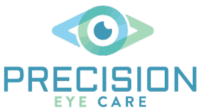Book Online
Previous
Next
Just choose the appointment type and time that work best for you, and you're on your way to clear, comfortable vision!


We welcome children of all ages, even infants because healthy eyes and good vision play a critical role in how infants and children learn to see. Infants with eye and vision problems can have developmental delays. Furthermore, good vision is the foundation for academic success. 80% of learning happens visually.
Just choose the appointment type and time that work best for you, and you're on your way to clear, comfortable vision!

As you can imagine, pediatric eye exams (we define a pediatric exam as an exam for children aged 6 and under) are different from adult eye exams. These exams usually take longer than an adult eye exam both because we want to build rapport with your child first and engage with them by turning examination procedures into a game. These exams may also take longer because they present their own unique challenges such as:
Fortunately, we are able to determine a prescription for children without relying on their responses. Likewise, we can tell when a child’s responses are biased towards receiving or avoiding glasses. To obtain a prescription, we shine light into their eyes and watch how it reflects back. It is essential that we dilate the child prior to this procedure to obtain accurate results.
The American Optometric Association recommends that children receive their first exam between ages six months and one year. The second exam should occur at least once between ages three and five. If everything is healthy and no prescription is found, the next exam should occur before first grade and then yearly thereafter.
No. The American Optometric Association states that these screenings provide less than 4% of information obtained by a comprehensive eye exam performed by your eye doctor. These screenings only tell you how far your child can read down an eye chart, but vision screenings do not check:
It is important to realize that visual acuity (the ability to read small letters on the eye chart) is only 1 of 17 visual skills involved in learning. Furthermore, on average, 25% of children who pass a vision screening have a vision disorder significant enough to require treatment, and vision screenings can miss up to 75% of children with vision problems.
Not necessarily. Children interpret whatever they see as normal, even if all they can see is the big “E.” They simply don’t have a basis of comparison.
Likewise, they may be able to see clearly out of one eye, but not the other. Since they don’t walk around covering one eye, they don’t even realize that one eye is blurred. These children are at high risk for developing amblyopia (lazy eye).
Some children who need glasses do not have any symptoms. Other children may display the following signs:
If you notice any of the following signs, please contact us right away. These signs may indicate that your child has a vision threatening, or in some cases, even life-threatening condition:
| Monday - Thursday |
|
||
| Friday |
|
||
| Saturday | Closed | ||
| Sunday | Closed |
